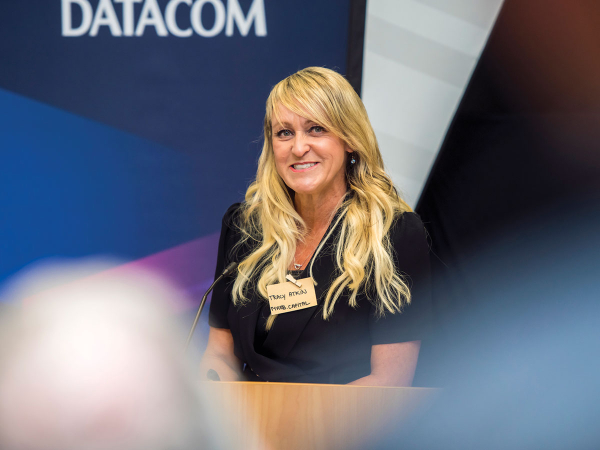OPINION: The role played by primary industries in the New Zealand economy has changed dramatically in the past 10 years.
Although dairy products remain our number one export, the technology sector, including agritech, will account for $9.8 billion in exports in 2022, with $726 million invested in New Zealand technology companies.
So what role does technology play in winemaking? Can we be seen as global leaders in vineyard and winery technology, in the same way we are seen as leaders in world-class wine? From my perspective working with agritech startups, I believe the New Zealand wine industry has many competitive advantages. So what are they? How can we maximize it to develop and commercialize new technology? Why do we want that?
If you work in a winery or vineyard, over the past couple of years you have witnessed a huge increase in the technology solutions available. In vineyards, drones, satellites and new camera technology are being used for aerial mapping, spraying, crop management, pest and disease detection and yield estimation. There are autonomous robotic vehicles, including multi-tasking chrome tractors, and technology for scaring and exploring birds. There are also innovations for workforce planning, health and safety, compliance, irrigation management, and plant and soil sensors to measure water stress and nutrient management.
The winery has new nanotechnology for molecular filtration, enzyme sensors, wine analyses, and fermentation monitoring. Waste recovery technology includes new forms of clean energy, such as producing biofuels from wastewater, biochar from the byproducts of grape vines, or bioplastic bird netting clips made from grape marc. For those measuring their carbon footprint and who are on the path to carbon zero, there are a range of new software options for carbon accounting and ESG reporting. Many of these new technologies will be on display at WinePro's Start-up Zone in Blenheim in June this year, showcasing the latest innovations emerging in the wine industry.
Much of this technology uses artificial intelligence and machine learning to turn data into insights. But is too much technology and data generation a good thing, and what are the risks and opportunities? An invention is not considered an innovation until it is commercialized. For a technology to be commercialized and widely adopted, success goes beyond the technology itself. Other factors to consider include:
- Painkiller vs Vitamin – Technology needs to address a big problem that needs to be solved, which is a real pain point (painkiller) rather than an ingestion (vitamin).
- Globally scalable and operable – New technology must be designed to be global from day one and scalable for growth. Manufacturing, distributing, servicing and supporting new technology globally are critical elements to consider early on.
- Customer-based value proposition – Engaging a potential customer early to provide feedback increases the chance that the solution will meet customer needs and be fit for purpose. Involving a pilot partner, such as a winery, from the proof-of-concept stage ensures that a minimum viable product (MVP) is commercially ready, and that the technology is not just a solution looking for a problem.
- Competitive Advantages – A customer-led value proposition is more likely to result in technology with fewer barriers to adoption. One of our competitive advantages as a wine industry is our collective approach in working with agritech startups during the R&D process and as investment partners. This investment may be in time, expertise and resources, as well as financing. Wineries often provide vineyards for trial sites, experienced staff, or networks of contacts. Our industrial research organizations can conduct trials in the vineyard or winery, providing scientific validation to support research and development. In many ways, our small size is an advantage, allowing us to be more flexible and collaborative. Through numerous external contacts, we can also open pathways to other wine regions and potential clients.
Many agricultural technology solutions can be applied to multiple sectors, so technology developed for the wine sector, such as crop management software, can also be applied to other industries, such as apples or cherries, and vice versa. Working with industry bodies such as AgriTech New Zealand, Callaghan and New Zealand Trade and Enterprise can also help to forge these cross-industry links – another advantage of our small size.
Over the next five to ten years, we will see an increase in the number of technology solutions available. This is an opportunity for the wine industry to position itself as a technology leader, working with technology developers to build and commercialize global customer-led innovation for all parts of the wine industry value chain. Together we can address some of the challenges posed by the speed of innovation and change, such as how to turn data into actionable insights, how to bring multiple pieces of technology together, and how to bring multiple disparate sets of data together by addressing data standardization and interoperability.
Industry partners are the bridge between startup technology and primary industry production in wine. They offer two different perspectives – technology as the enabler, and the customer as the end user. By engaging early in the technology life cycle, and working collaboratively as an industry, this gives us a competitive advantage in developing world-class, globally scalable technology.
Applying our pioneering spirit of collaboration and drive towards sustainability will stand us in good stead to become leaders in winemaking technology.
Tracy Atkin is CEO of Marlboro Capital. She's a startup advisor, angel investor, and CEO of Smart Machine, developer of the Oxin autonomous vineyard tractor. Tracey is also a consultant for the WinePro trade event in Blenheim in June.
To check out some of the numbers driving agricultural technology in New Zealand, go to nztech.org.nz

